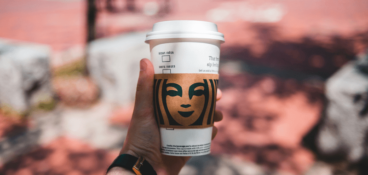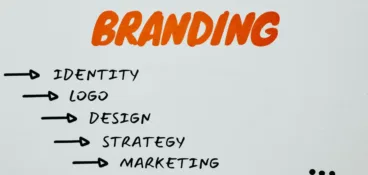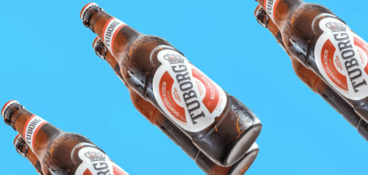Behind every successful brand is a carefully considered brand identity.
In this article, we’re going to pick up some tips and inspiration from nine of the most memorable brand identity examples, whether you’re building a brand from scratch or giving your existing brand identity a refresh.
Here’s a roundup of the best brand identity examples:
- McDonald’s
- Apple
- Headspace
- Patagonia
- IKEA
- Airbnb
- Heinz
- LEGO
- Uber Eats
We’ll take a closer look at each example in just a sec. But before that, let’s kick things off by defining what we mean when we talk about brand identity.
What is brand identity?
Brand identity is essentially the face and voice of a brand. It includes all the ways a brand reaches and resonates with its target audience across every touchpoint, from product packaging to social media posts.
Here are some of the elements to consider when crafting your brand identity:
- Logo
- Color palette
- Imagery and graphics
- Typography
- Messaging
- Tone of voice
- Brand values and mission
All of these different elements need to work together to help you maintain brand governance and create a consistent and memorable image of your brand. This is what helps people recognize and connect with your brand time and time again.
Why do you need a brand identity?
Today’s market is more crowded and competitive than ever, with new products and services popping up all the time. A strong brand identity is your best bet if you want to cut through the noise.
Here are five of the biggest benefits that come from crafting a solid brand identity.
Differentiation
A distinctive brand identity sets you apart from competitors by communicating what makes your brand better than the rest. It helps customers recognize and remember you among a sea of options.
Consistency
A cohesive brand identity ensures consistency across all touchpoints, from your website and social media to packaging and customer service. This kind of consistency not only builds trust, it also makes it easier to create marketing content for your brand as it grows and evolves with a set of brand guidelines.
Trust and credibility
A well-defined brand identity shows potential customers that your brand is professional and reliable. Naturally, when customers trust your brand, they’re more likely to choose your products or services over others.
Emotional connection
A strong brand identity should resonate with your target audience on an emotional level and create a connection that goes beyond the products or services you offer. This emotional bond boosts customer loyalty.
Increased value
A compelling brand identity can command higher prices and perceived value. When customers associate your brand with quality and authenticity, they’re willing to pay more for what you offer rather than taking a risk on a brand they’re not familiar with.
Supercharge your marketing reviews
Share, review, and approve all your content in one place with Filestage.
Best brand identity examples
All good things take time, including your brand identity. An effective corporate brand identity is much more than a catchy slogan or snazzy logo. It requires you to think about every aspect of your brand, and how all of these aspects work together to form a cohesive, compelling experience.
Let’s see what we can learn about brand identity from some of the biggest and most iconic brands of all time.
1. McDonald’s
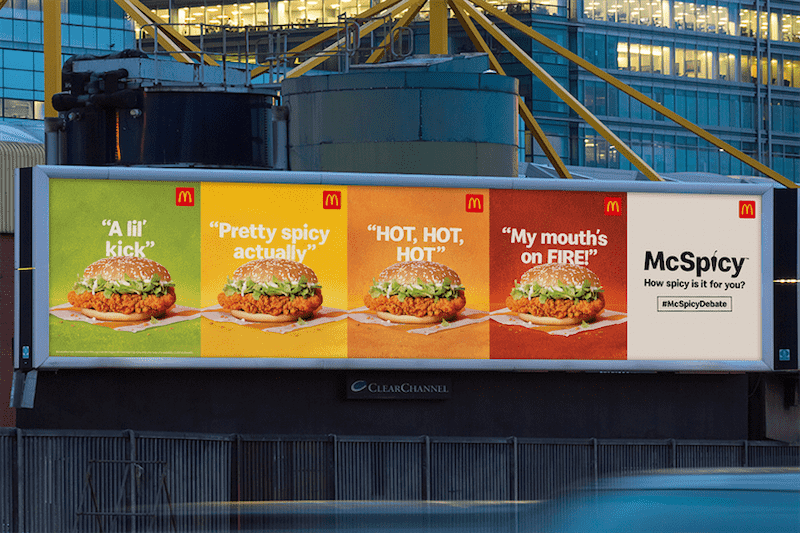
McDonald’s is hands-down one of the most recognizable brands in the world. And that’s not just because of its Big Macs, but rather the simplicity and warmth of its brand identity.
The Golden Arches was first incorporated into the brand’s logo over 60 years ago. And while the brand has evolved during this time, the big ‘M’ has remained remarkably close to the original. Now, whether you’re coasting down a motorway or circling a shopping mall carpark, one side-eye glimpse of the golden logo instantly lets you know what to expect. This feeling of familiarity is a big part of what has helped McDonald’s maintain customer loyalty down through the decades.
Perhaps most notably from a brand identity point of view, McDonald’s impeccable consistency in customer experience has helped the brand diversify its menus to meet the preferences of different countries, cultures, and dietary requirements.
2. Apple
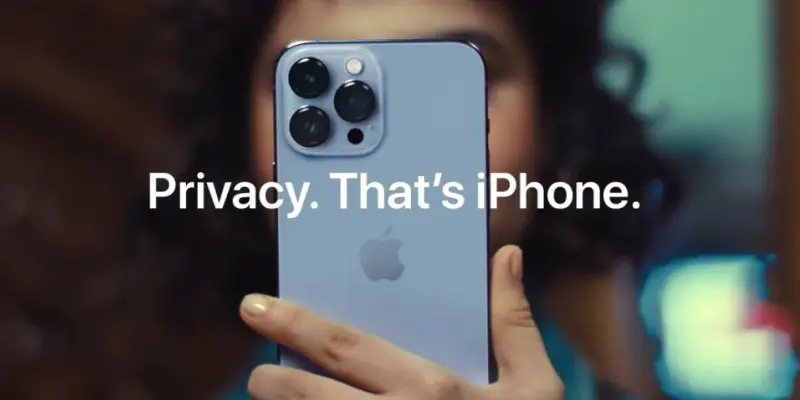
Apple has been pushing the boundaries of what’s possible in technology since its inception in 1976.
Today, the brand’s visual identity is characterized by several key elements with a sleek, minimalist look and feel. First off, there’s the instantly recognizable bitten apple logo that symbolizes simplicity, sophistication, and creativity all in one. Then there’s the crisp packaging and airy in-store experience.
Most importantly, though, Apple’s brand identity is reinforced by its commitment to user-friendly interfaces, seamless integration across devices, and constant product innovation. This focus on user experience has allowed Apple to create an emotional connection with consumers, fostering trust, brand loyalty, and advocacy.
Overall, Apple’s success lies in its customer-centric approach, spanning from packaging to product. This focus on user experience has allowed Apple to create an emotional connection with consumers, fostering trust, loyalty, and excitement around each new launch that comes their way.
3. Headspace

There’s more than a few wellness apps knocking around these days. But Headspace is one of the best known and most recognizable platforms of them all. And brand identity has had a large part to play in helping the brand become a leader in its field.
Headspace’s visual identity is quirky, warm, and uplifting with a series of simple animated characters. The brand’s personality stands out as a playful alternative to other platforms in the wellness space to attract a wide and varied target audience.
What’s more, Headspace’s consistent brand identity means that no matter where people interact with the brand (the app, website, or social media) they’re met with a series of familiar and friendly faces. Headspace’s mood-boosting bright color palette is another recognizable element that added to the brand’s mass appeal.
4. Patagonia
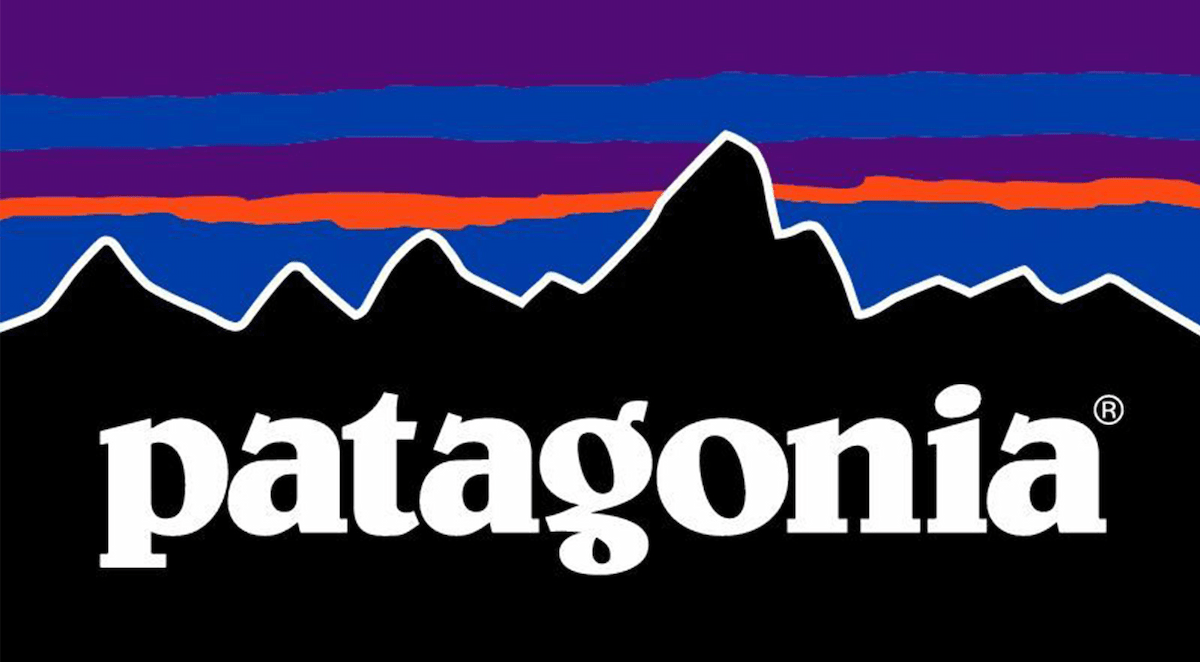
While visual and tonal style are both important for brand identity, your values and mission as a brand matter too. And no brand has nailed this part of brand identity better than Patagonia.
From day dot, Patagonia has been committed to environmental sustainability and ethical business practices, and this commitment has been woven into every aspect of its brand identity. Patagonia’s brand purpose is rooted in its love of nature and the planet as a whole, which drives everything from its high quality product range through to all its advertising content.
Aligning yourself with a purpose that fits with your brand is a powerful way to appeal to your target audience, as people will come to associate your products and services with a mission that makes sense for them. Over time, a strong brand purpose that creates positive change is a great way to build loyalty and advocacy for your business.
5. IKEA
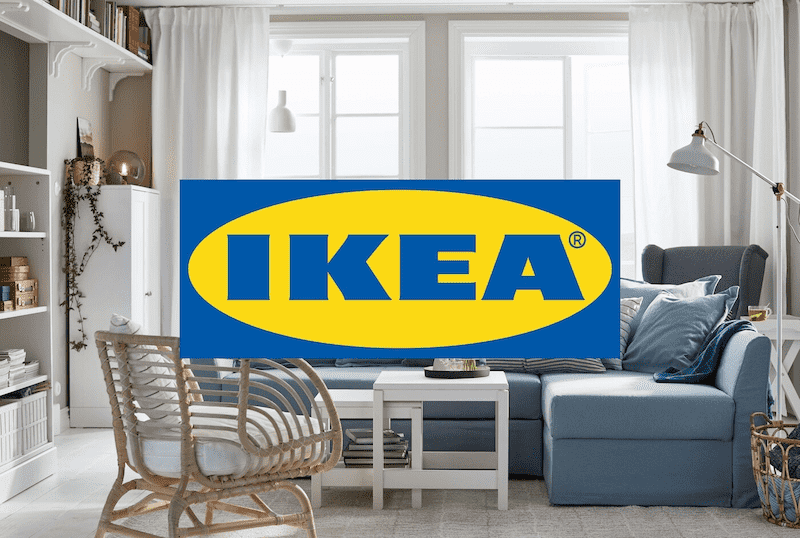
From homeware solutions to Swedish meatballs, IKEA has earned itself a spot on the list of great brand identity examples thanks to its unique in-store experience, affordable Scandinavian aesthetic, and witty tone of voice across its marketing content.
IEKA embodies a brand experience centered around its core brand values of simplicity, sustainability, and innovation. Whether you’re navigating through its maze-like stores or assembling its flat-pack furniture at home, every interaction with IKEA reinforces this brand identity and values.
The brand’s blue and yellow logo is an icon of its Swedish heritage and instantly recognized as a symbol of reliable furniture that doesn’t break the bank. And this comes through everywhere from its big brand campaigns to in-store point of sale materials.
6. Airbnb

Founded in 2008, Airbnb set out with a simple idea to help people open their own homes to travelers. And over the years, the brand has gone on to transform the hospitality industry worldwide.
At the core of Airbnb’s brand identity is its mission to help people “Belong Anywhere”, embracing inclusivity, diversity, and community among its audience. Again, this is an excellent example of going beyond a mere product or service offering to tell a bigger story and form more meaningful connections with customers.
One of the most notable aspects of Airbnb’s brand identity is its visual identity, which is characterized by its distinctive logo featuring a combination of a simple “A” and a heart symbol. This logo reflects Airbnb’s focus on warmth, connection, and hospitality, inviting travelers to feel at home wherever they go.
7. Heinz
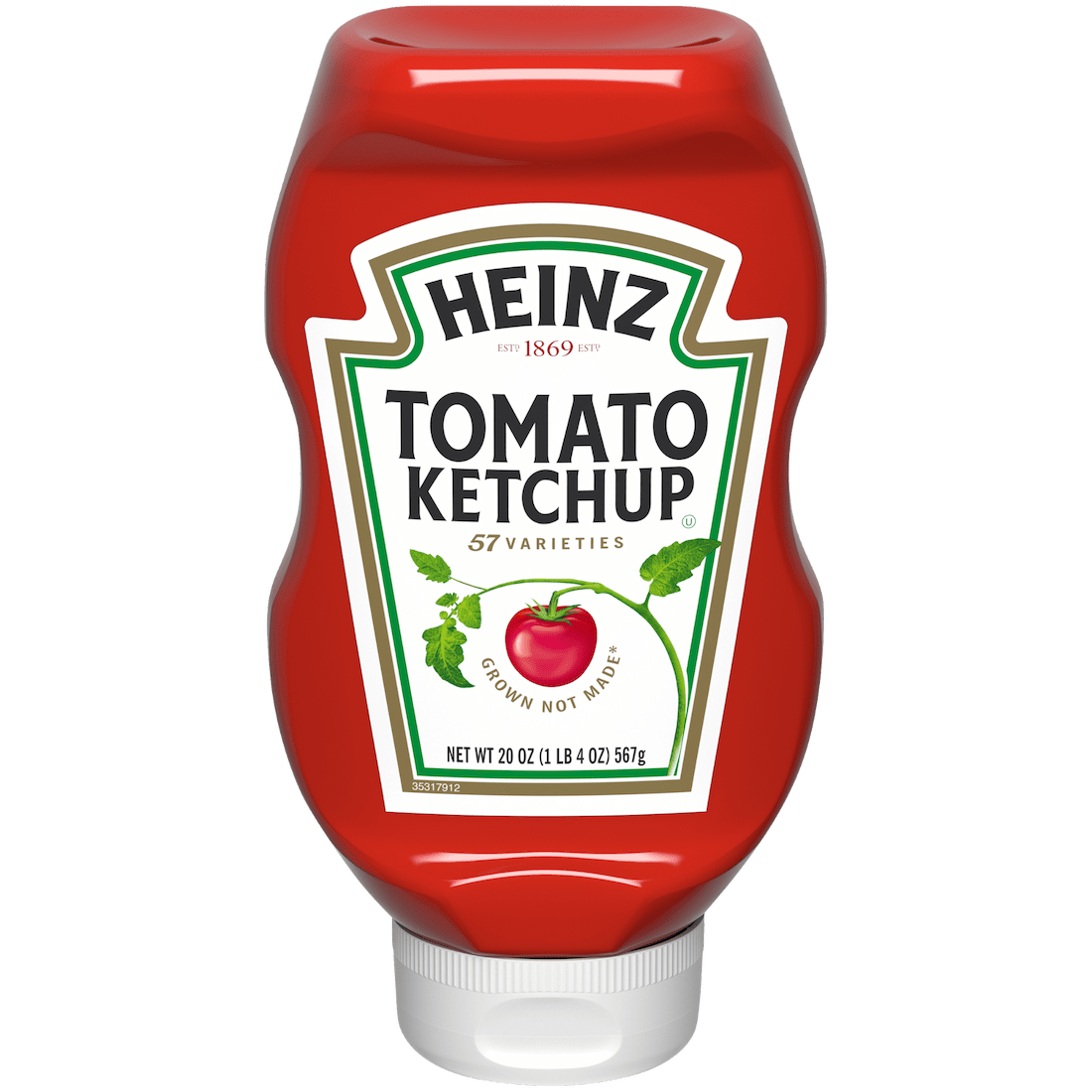
Next brand identity example on the list? It has to be Heinz! Launched in 1869, Heinz is a cracking example of how to evolve a brand identity while still maintaining consistency over time.
Over the decades, the company has created and launched more than a few iconic products, from mayonnaise to baked beans. But ketchup has become the brand’s biggest claim to fame since it hit the shelves in 1876. So much so that when a bunch of people from around the world were asked to “draw ketchup” in 2022, the Heinz bottle was the go-to for many.
Heinz’s secret ingredient for success lies in its drive to diversify its product range and meet consumer trends, while keeping its visual identity (namely, its logo) largely unchanged. This has made the brand synonymous with quality and reliability in the mind of the consumer.
8. LEGO
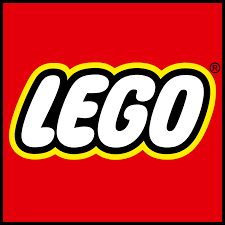
LEGO’s brand identity is built around imagination and learning through play. And it’s another company that has stood the test of time by staying true to its values while evolving its products to appeal to newer generations. From simple, sturdy building blocks to intricate models and themed playsets, LEGO inspires builders of all ages to explore and express their creativity.
Consistency and authenticity are the building blocks for LEGO’s success as a brand. This helped it form a community of fans and collectors that only grew over the decades. As a result, the brand has been able to explore its product ranges and create new experiences.
By keeping up the quality of its products, LEGO has gained the trust of its audience. It’s carved out a niche angle within a crowded space, helping to differentiate itself from the competition. All this is topped off with a striking visual style of bold colors that could be spotted on the shelves.
9. Uber Eats
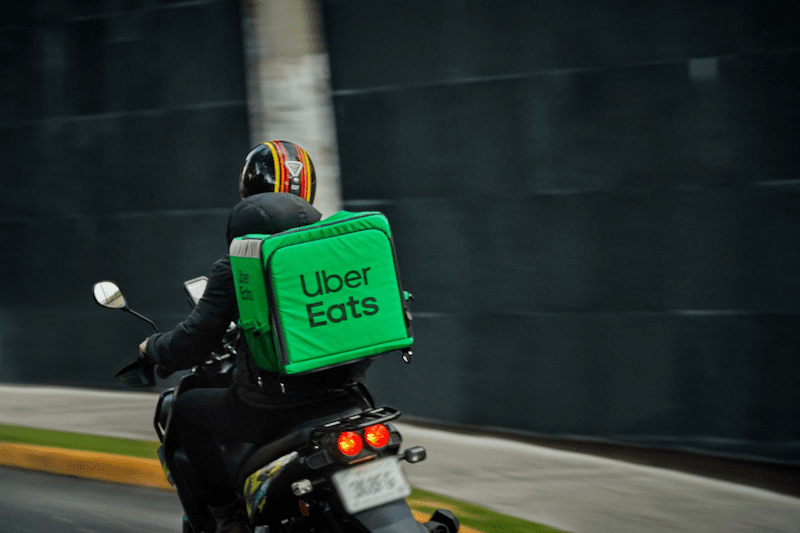
Founded in 2009 by its parent company, Uber, Uber Eats took the world of food delivery by storm and has only gone from strength to strength since then.
Uber Eats puts a focus on convenience and simplicity as its purpose, with an intuitive app design and simple, striking visual identity to match. From its iconic bike delivery bags to witty advertising campaigns, the brand has been able to expand into delivering just about anything, all in the name of an easier life.
One big takeaway from this best example of brand identity, is the rewards that can come from considering how your brand can get the most out of every single touchpoint. Whether it’s on the streets or across its social channels, one glance at its clean, green branding is enough to get our tummies rumbling.
It’s definitely worth thinking about how you can incorporate this approach into your own branding elements!
Review your brand content with Filestage
Building a consistent brand identity means making sure that all your brand assets work together at all times. Which can be easier said than done, especially if you don’t have a solid process for reviewing all your brand elements.
Filestage is a review and approval tool designed to help busy teams share, review, and give feedback on a range of different file formats, including documents, designs, live websites, video files – to name a few! This makes it the perfect tool for any team that needs to ensure brand consistency across every touchpoint.
Key features
- Seamless integrations – Collaborate with your team across all the popular apps, including Slack, Adobe InDesign, Adobe Premiere Pro, OneDrive, and Asana
- Unlimited users – Invite teammates and clients to review and give feedback directly on the file by sending an email invite or sharing the URL link
- Review groups – Get the right eyes on each stage of your projects by assigning roles and user permissions
- Version control – Keep projects moving with peace of mind that every comment, amendment, and file version is available
- One-click approvals – Once your content is up to scratch, you can mark it approved and get it out into the world ASAP
Final thoughts
A strong brand identity is crucial if you want to have a successful brand. So I hope these examples have inspired you, no matter what stage of the brand-building process you’re at.
If you want to make the process of reviewing all your brand content more efficient for better results, start your free trial today!



